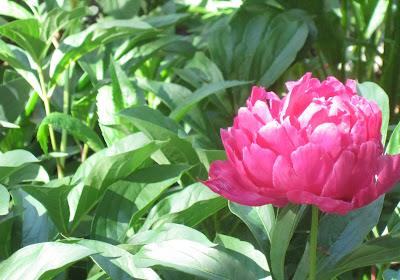
I was a few minutes early for my hair cut last week. Lucky for me, The Colour Box is across the street from the Clinton Community Gardens, which could not have been more beautiful. Sadly, no one was working in the garden at the time, so I had to take all my photos from outside the fence. So full of bloom...it felt like an impossibly perfect garden moment.

The juxtaposition of soft rose petal and
hard metal fence gets me every time.
hard metal fence gets me every time.

If you live in the neighborhood, between 34th and 59th Streets, 8th Avenue and the Hudson, you're eligible for a key to the front garden. Bring proof of address (driver's license, Con Ed bill, library card) and $10 (for the key) on Tuesdays between 6 & 7 pm or Saturdays between 11 am & noon.


There's a waiting list for rear garden plots, where members grow edibles and ornamentals. Visitors are allowed into the front garden when a key holder is present...and if they abide by the rules!


Next time you're strolling down 48th Street (between 9th & 10th), peek through the fence. If you see someone hard at work ask them to let you in. If I saw this much from the sidewalk, just imagine what treasures await within.








































